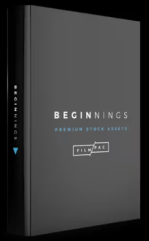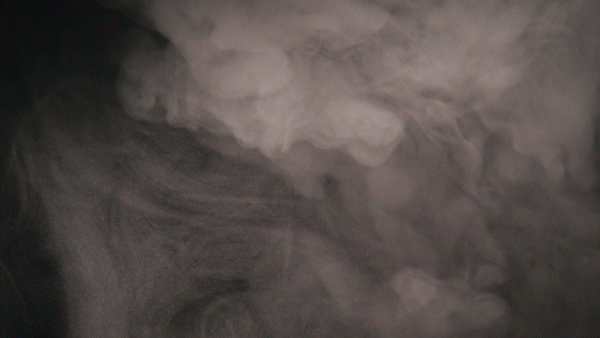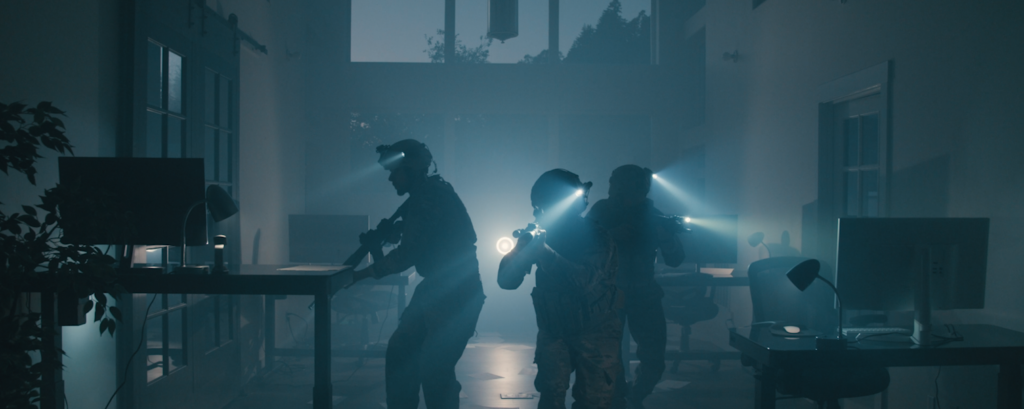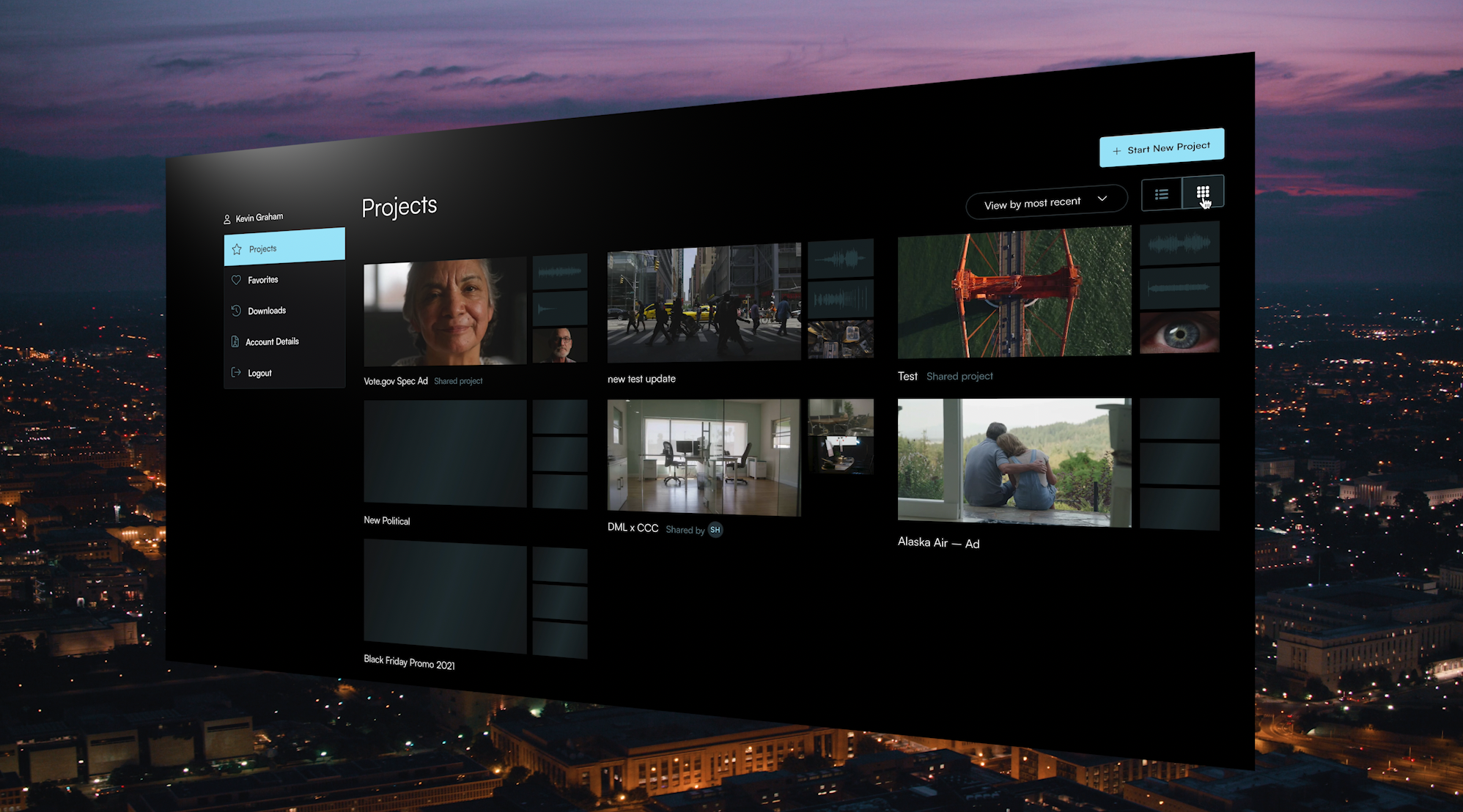
Filmpac Footage Contributor Program
Want to make money selling footage through a major stock footage platform like Filmpac? This page will walk you through the processs.
Continue ReadingBy Kevin Graham
Many filmmakers are familiar with diffusion filters that are part of the camera rig. But sometimes, you need to add even more depth or weight to a scene.
In-air diffusion, such as fog or haze, is a great way to accomplish this.
A subtle amount of haze or fog can provide for a more cinematic, soft look. Heavier amounts can be used for dramatic effect and to create cool beams from light sources. This effect is commonly used throughout major feature films and high-end advertisements alike.



There are a few types of in-air diffusion:
Haze is the longest-lasting and easiest to work with, and it tends to hang in the air and be much more subtle than fog. This is the highest-end in-air diffusion, and is used on professional film sets. It is easy to increase or decrease thickness and intensity with a hazer machine.
Haze is generally comprised of water-soluble glycols or highly-refined oils, dissipated through the machine and into the air.
On the downside, hazer machines are generally very expensive to rent or buy. They’re also really heavy. But on a bigger or more accessible set, haze is well-worth the investment.

Fog machines are much cheaper and lighter, but fog doesn’t hang in the air as long, it’s less subtle, and isn’t as clean as haze. Fog is generally used as more of a special effect than as a subtle atmosphere (we’ve all see fog machines at a concert or two), although it can be used for both if haze isn’t available.
Fog fluids are also comprised of water-soluble glycols, which are not harmful to humans unless inhaled in extremely large, concentrated quantities. Still, it’s always a good bet to use as little fog or haze as possible to achieve the desired effect.
It is important to plan for the effects of your diffusion on any fire alarm system near the area where you’ll be shooting. Some fire alarms are triggered by particulates in the air, and if you use a fog or haze machine close by, the alarm can be triggered. This is enough to ruin your day, especially if there is a sprinkler system attached to the alarm!

Spray cans are a cheap, light alternative to haze or fog, but they don’t produce much diffusion, and it dissipates quickly. Most spray cans last for at least a few hours of intermittent use. The quality of diffusion will be lesser with a spray can, but for a quick shot on a budget, these are perfect.

Besides lighting, diffusion is the most powerful way to craft the mood of your scene. There is room for haze or fog in almost every shoot, and you’ll have a lot of fun experimenting and learning this new technique.
Low fog machines are a type of fog or smoke machine, but they’re specially designed to create that cool, creeping fog effect you see snaking across the floor in spooky scenes or adding drama to a concert stage. Unlike their cousin, the traditional fog machine, which sends a plume of fog upwards, low fog machines are all about that ground-hugging mist.
But how do they work their magic? It’s all about the cool tech inside. These machines often use a combination of fog fluid (typically a glycol-based concoction) and a chilling method, like dry ice or refrigeration to keep the fog low and slow. This means the fog is denser and sticks close to the ground, creating that eerie, ethereal effect.
Unlike some smoke machines or haze machines that might set off fire alarms, most low fog machines are designed to be less likely to trigger smoke particles detectors. This is because the fog produced is often cooler and heavier, so it doesn’t rise and mingle with your fire alarm system the way hotter, lighter smoke would.


Are you stepping into the misty debate of haze machine vs. fog machine? It’s really all about the vibe you’re going for on your set. Haze machines are the unsung heroes when it comes to subtle, almost invisible magic. They pump out the finer, lighter mist that hangs in the air, catching and enhancing lighting effects without being too in-your-face. Think of a soft, diffused look that makes light beams pop in concerts or adds depth to film scenes.
On the flip side, fog machines are the showstoppers. They create the dense, visible cloud of fog – perfect for that dramatic entrance or eerie, suspenseful scene. These machines use glycol-based fog fluid to generate a thicker, more noticeable effect. You’ll see fog machines create that classic low-lying fog in horror movies or the big, billowing clouds in dance clubs. With fog, it’s all about making a statement.
So, what’s your pick? If you want a subtle atmosphere enhancer, go for the haze machine. But if it’s drama and high impact you’re after, a fog machine is your best bet. Remember, different fog machines cater to different needs, so it’s about choosing the right tool for your creative vision.
Some machines are designed to be compatible with different types of fog fluids, which can affect the thickness, hang time, and dispersion of the fog. This versatility allows users to tailor the fog effects to their specific needs, whether it’s a long-lasting haze for a concert or a quick burst of fog for a special effect in a play. Each type of machine offers unique capabilities, making them suitable for a range of applications in entertainment, event production, and beyond.
Fog and haze refills, essential for keeping your machines running, come primarily in the form of specially formulated fluids. Fog juice is used for thick, visible clouds of fog. The composition of the fluid can vary to produce different types of fog effects, from dense and heavy to light and airy. Haze fluid is typically lighter and designed to produce a very fine mist that hangs in the air, creating a subtle, diffused effect that enhances lighting without obscuring visibility.
It’s crucial to use the right type of refill for your machine. Using the wrong fluid can not only compromise the effect but also potentially damage the machine. Manufacturers often recommend specific fluids for their machines, ensuring optimal performance and longevity.
Additionally, there are eco-friendly and water-based options available for those conscious about the environmental impact and safety. These alternatives are less likely to leave residues and are generally safer for use in public spaces.
Water-Based Fluids: These are the most common and are made primarily of water mixed with glycols or glycerin. They produce a fog or haze that is generally less dense and dissipates faster than oil-based fluids. Water-based fluids are known for being easier to clean up and less likely to leave residue on surfaces or in the machine. They are also generally safer for use in enclosed spaces and are less likely to trigger allergies or respiratory issues. The fog produced is typically lighter and more transparent, making it ideal for enhancing lighting effects without overly obscuring visibility.
Oil-Based Fluids: These fluids contain mineral oil or other oil compounds. They create a denser, thicker fog or haze that lingers longer in the air compared to water-based fluids. The fog produced is more opaque, which can be desirable for certain dramatic effects or in situations where a more pronounced fog is needed. However, oil-based fluids can leave an oily residue on surfaces and in the fog/haze machine, requiring more thorough cleaning. They can also be more likely to cause irritation or allergic reactions, making them less suitable for indoor use or in settings where people might be sensitive to such effects.
Dry ice machines are a unique type of fog machine used to create dense, ground-hugging fog effects. They work by heating water and then adding dry ice (solid carbon dioxide) to it. As the dry ice sublimates, it cools the surrounding air and water vapor, creating a thick, white fog that stays close to the ground. This is because the fog is composed of cool, heavy carbon dioxide gas and water vapor, which is denser than the surrounding air.
You might be asking yourself, “What’s the difference between dry ice machines and low fog machines?” Well, they’re both popular for creating ground-level fog effects, but they operate differently and have distinct characteristics. Low fog machines typically use regular fog fluid versus dry ice. They also last relatively longer compared to dry ice.
Some key points about dry ice machines:
Thick, Low-Lying Fog: They are ideal for creating a “creeping fog” effect that doesn’t rise above knee level. This makes them popular in theatrical productions, dance performances, and special events.
Safe for Indoor Use: The fog produced is non-toxic and safe to use indoors, as it primarily consists of carbon dioxide and water vapor.
No Residue: Unlike some fog machines that use oil-based or glycol-based fluids, dry ice machines leave no residue, making them suitable for use in venues where cleanliness is a priority.
Handling and Storage: Dry ice requires careful handling as it is extremely cold and can cause burns if touched directly. It also requires proper storage in insulated containers to maintain its solid state.
Immediate Effect: Dry ice machines produce fog instantly upon adding dry ice to the heated water, making them suitable for timed effects in shows or events.
Kevin is the Music Director and Lead Composer at Filmpac.

Want to make money selling footage through a major stock footage platform like Filmpac? This page will walk you through the processs.
Continue Reading
By far, the two most common frame rates in modern American video editing and production are 24fps and 29.97fps. Here's the difference.
Continue Reading
There are 5 main types of camera movement. We break each of them down and show you how they can help you tell your stories better.
Continue Reading
If you’re a photographer or filmmaker, you’ve likely heard of The Rule Of Thirds. here's a guide on how to apply it and when to break it.
Continue Reading
Filmpac’s newly-designed Project Feature is a powerful tool for collaborative video editing. Here’s a quick rundown of how it works.
Continue Reading

One of the most difficult parts of being a professional filmmaker is effectively managing and budgeting your time.
Continue Reading
Want to make money selling footage through a major stock footage platform like Filmpac? This page will walk you through the processs.
Continue Reading